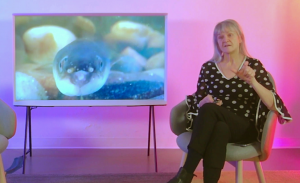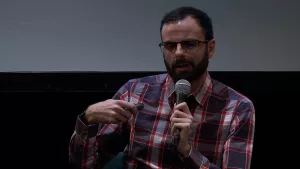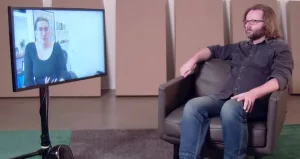Jackson 2Bears, a Mohawk multimedia artist, shared insights during an artist talk after participating in a panel discussion. Currently based in Lethbridge, Alberta, where he teaches at the University of Lethbridge, Two Bears is known for blending his artistic practice with deep cultural and theoretical explorations. His talk delved into the integration of Indigenous perspectives within contemporary technology and art.
2Bears spoke about his recent projects and the philosophical underpinnings influencing his work, particularly the ideas of spatial philosophy as opposed to the Western focus on temporality. He cited the works of philosopher Vine Deloria Jr., emphasizing the contrast between tribal spirituality and Western ideologies. 2Bears highlighted the notion that landscapes are not merely physical spaces but living, storied entities that embody cultural narratives and histories.
Further, he discussed his collaborations with other Indigenous artists, exploring site-specific installations that engage directly with the land. These projects often involve immersive experiences that challenge conventional views of space and place, aiming to foster a deeper connection with the environment.
Throughout his presentation, Two Bears proposed a rethinking of technological engagement, advocating for an approach that respects and incorporates Indigenous cosmologies and methodologies. His discussion was not only a reflection on his artistic journey but also an invitation to consider more inclusive and culturally aware frameworks in the intersection of art, technology, and society.


